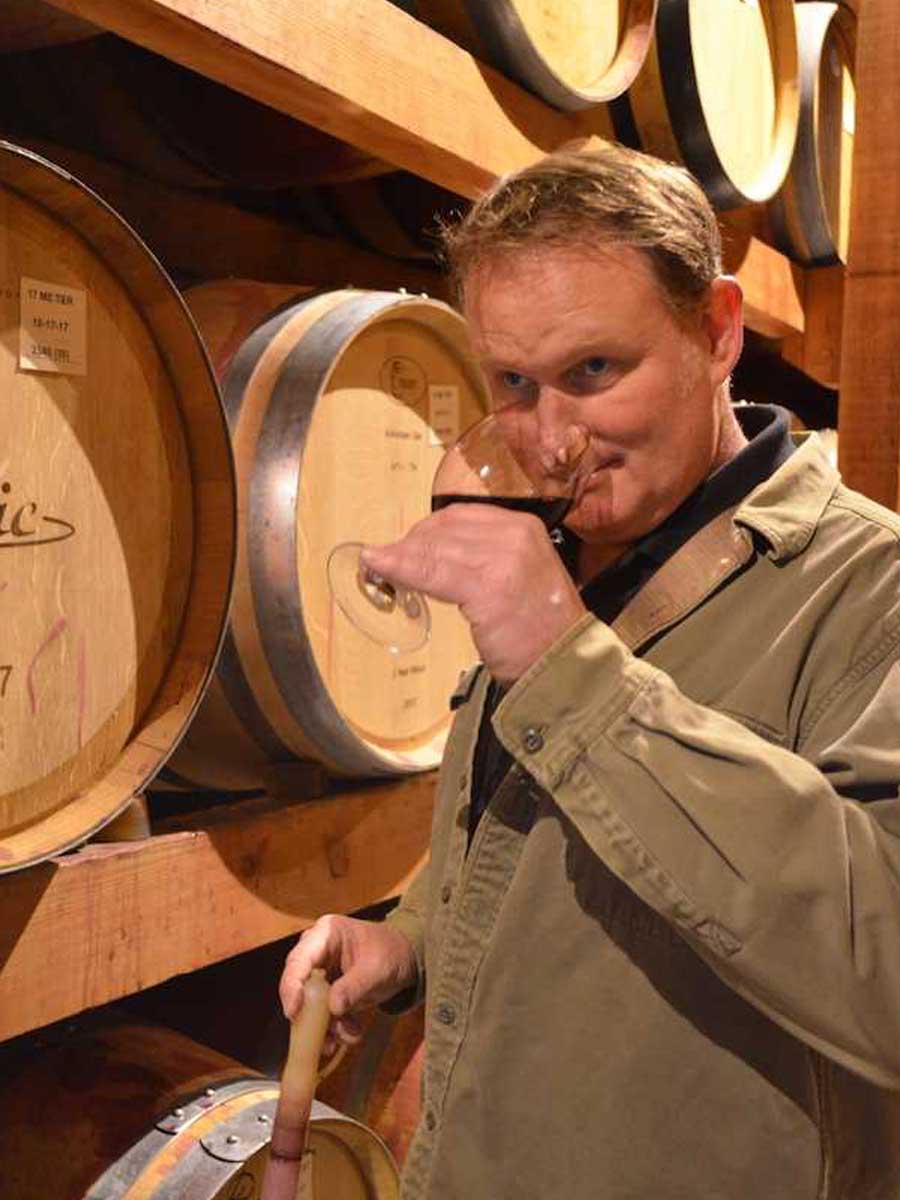Our Stories about
Barrel Tasting Basics & An Excellent Opportunity to Try It
June 8, 2017
Napa Winery Party with Barrel Tasting
Keenan Winery’s annual Open House in the Spring Mountain District of Napa Valley, California is one of the most loved and enjoyed celebrations for Keenan Winery’s club and email list members. Here, in this video, Michael Keenan gives you a good description of such an awesome event where you can actually taste wine right from the barrel! Specifically, he says:
Barrel Tasting Basics
- Something that we all look forward to as a staff is starting a big party, having sometimes three-hundred people here, with all the food and music. The weather is usually great; it’s a fun day to mark on your calendar, which a lot of our local members have on the calendar every year – it’s great to see the same faces. And we also do something very special for the party, that we make a special red blend that is shown at barrel, that we make just for that day. So, it can only be purchased on that day.
- If you see this video and you can’t come to the party, you can email us, and we can put together an order for you. But we only do with that one day, so it gets a special label so it’s something that’s obviously extraordinary unique, I think, like a collector’s item, and something have in yourself. We did put a great price on it, too, so it’s a great chance to give it your first look at that vintage out of barrel, and then determine whether you want to buy it seven-hundred fifty magnum, three litre, and get your special label on it. So, it’s a great opportunity.
What to expect if you’ve never been barrel tasting before…
Think of wine-tasting and the first thing that comes to mind are rows of bottles, glasses on a table and a spittoon next to you. True wine experts though, would take it one step further and do like the makers do: taste wine straight out of the barrel.
It’s an activity that most wine lovers only do on occasion, most likely when visiting a vineyard, but a very frequent activity for winemakers. Once grapes have finished fermenting and are transferred into barrels for aging, winemakers must track the development of their wines by tasting samples directly from the barrel.
As time passes, the aromas, flavors, texture, body and tannins—imparted both by the grape skins during fermentation and by barrel ageing—take shape. The questions one asks hence tends to be more on the developmental stages of wine rather than appreciating and analyzing the finished product.
How to Book a Barrel Tasting
- Plan one year in advance: Make a list of your favorite wineries in the area, and make appointments with each of them before their calendars fill up. You can book directly with the winery; you don’t have to use a third party booking agent.
- Book a private tasting, if available: One-on-one appointments give you the chance to speak directly with the winemaker and/or tasting room manager to get more information about the vintage.
- Space out your visits: Don’t book more than two or three barrel tastings per day. Give yourself about 75 minutes per winery, minimum. This gives you time to travel to each winery, fully enjoy the tasting experience, and get to the next location in time. Arriving late to a winery could force them to cancel your appointment entirely.
- Familiarize yourself with the estate: Getting to know the estate’s wines, and its winemakers, will also teach you what to look for in these wines when you eventually taste them from the barrel.
Tasting Wine from the Barrel: Analyzing Flavors
Getting an appointment at a top winery can be difficult, but often, actually tasting wine from the barrel is even harder. That’s because truly age-worthy, collectible wines made at the top wineries in the world tend to be harsh in their youth. The bottled version of a wine, like a Keenan Merlot Reserve Napa Valley, is graceful and supple. Note, in the barrel many wines have rough tannins, an astringent personality, and offensively strong oak. This is just a sign the wine is too immature to show its refined features. When tasting wine from the barrel, you need to taste “around” the harsh flavors, finding the broad brushstrokes of balance and age-worthiness hidden underneath all of that tannin and oak.
Here’s one way to approach barreled wine for the first time:
Step 1: Look for fruit flavors and scents.
Ignore the oak and tannins for now, and search for the subtle fruit notes instead. What kind of fruit are you tasting? If the wine has a green, bell pepper-like quality, it’s possible that the grapes are underripe. If the wine tastes especially sweet or alcohol-heavy, it’s a sign that the grapes are overripe. A balanced wine will taste like a happy medium between these two: slightly sweet fruit, with some hint of floral or herbaceous depth.
Step 2: Analyze the tannins.
After you’ve found the fruit, you can revisit the tannins. Age-worthy wines will have very prominent tannins at the barreling stage that will cause your lips to pucker. However, these tannins should still be relatively smooth on the palate. Very raspy tannins point to a wine that’s a little too overripe.
Step 3: Smell the oak.
Wine straight from the barrel will naturally smell like new wood or oaky spices. It’s alright if this scent is overpowering in the glass at this stage. The oak aroma and flavor will likely dissipate as the wine matures in the bottle later. What you should look for is a wine that still has some layers of fruit and tannin, in addition to the oak. If you only smell and taste oak in the glass, it may be a sign that the wine isn’t very balanced.
Step 4: Is the wine well-balanced?
This brings us to the last step when tasting wine from the barrel. After you’ve identified all three components, from fruit to oak, go back one final time to see how all of these moving parts relate to each other. Each component will feel a little unrefined and rough, but they should taste like they’re in proportion with each other. A wine that has all oak flavor and virtually no fruit likely won’t improve much over time.
If you notice a flavor seems too prominent, or out of place, feel free to ask the winemaker about it. It’s possible that this is the result of an unusual winemaking technique, or simply a quirk of the vintage. At top estates, winemakers are usually willing to have honest conversations with tasters about the pros and cons of each vintage, and are often more than happy to answer your questions.
Learn More About

